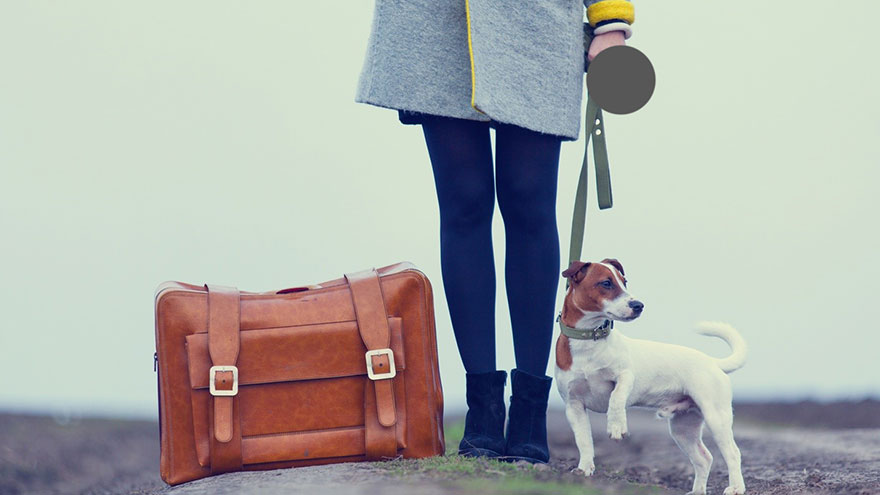Tips on How to Travel with Your Dog
Many people like to take their dogs with them as they travel, and traveling with your dog can be a lot of fun. However, there are dangers to consider including loosing your pet, dehydration, nausea, and the pet ruining the trip due to its anxious behavior.
Before you plan a trip with your pet make sure: the pet will have a safe place to stay once you reach your destination, you’ll be able to keep some sense of routine with your pet, and that the place you are visiting, whether it’s a hotel, friend or relative welcomes your pet. Don’t assume your friends love your pooch as much as you do.
Also, even if you’ve stayed at the same hotel countless times, confirm each time you travel that they still accept pets. Finally, if you’re staying with friends or relatives, make sure they have no pets or that their pet is very friendly with all animals in their home. Many friendly dogs become very aggressive when another animal is placed in their home.
There is nothing worse than being on the road with your companion animal—only to find out you need to board your pet at an unfamiliar kennel, or worse yet, ending you vacation to accommodate your pet’s needs.
Traveling With Your Dog

Provided that all the above conditions are met, there are some things you can do to insure the comfort and safety of your animal(s). Prior to your trip, make car rides a pleasant experience. If you’re traveling with an animal that does well on a leash, such as a dog, take short trips with your dog and make them fun and joyful. Plan your short trips at times when your pet may be a little hungry.
A full stomach and a nervous dog may create a messy, stinky car. Put your dog on a leash and coax them into the car. Give the dog a treat for getting in the car, ride a few blocks then come home, give the dog another treat at the end of the ride or maybe play with him or her once your home. In no time you’ll find your dog loves the car, and you’ll want to increase the length of your short trips.
If your dog is very frightened and difficult to put in the car, give them a full meal, a little pet rescue remedy then pick them up and sit with them in the car. Do this once or twice a day for several days. Do not start your car, or ride around the block until you pet hops in and out of the car easily. Once your pet is comfortable getting in and out of the car, begin taking short pleasure trips.
As you pack for your trip, pack pet food, water, toy (s), bed and a crate. (Bring a crate even if you have no intention of using it). As much as possible, keep food and routines consistent with those used at home. Anytime you change pet food, your dog may experience diarrhea, constipation, nausea or allergic reactions. Water from home encourages your dog to drink—avoiding dehydration.
Dogs are highly sensitive to smells and may not want to drink tap water if it has a different chemical content and smell. A crate is good to have with you in the event your car breaks down or the home your visiting has an aggressive animal and didn’t let you know, or if your dog is used to sleeping in a crate/bed at night. Also, pack your most recent pet record or health certificate, and make sure your pet’s collar has your name and phone number on it.
The day of your trip make sure the dog’s collar is snug-but not too tight. Even if your dog is trained off-leash, make sure your dog is leashed or inside at all times during your trip. Before you open a car door at the rest stop or restaurant, make sure your pet is leashed and you have hold of the leash. If you roll down your windows the opening should be smaller than the size of your pets head.
There’s nothing worse than losing your pet when traveling. Stop every 1&1/2 to 2 hours and take a short walk with your dog at the rest areas. Offer your dog small amounts of food throughout the day and provide water at every stop. If it’s hot outside and you stop to eat or take a break, park under shade and crack the windows about 1-2 inches. This allows your car to cross ventilate. If it’s very hot, do not leave your pet in the car unattended for more than 3 minutes.
Car interiors are dangerous to pets in the summer heat. If it’s 90 degrees outside, your car can quickly exceed 110 degrees. If it’s winter and very cold, make sure the dog is parked in the sun and that they have bedding or a coat to stay warm. Never force your pet to eat or drink on the day you are traveling.
Once you arrive at your destination, set up a pet feeding and sleeping area and reestablish as many routines from home as possible. And lastly, have a great time with your animal companion.

